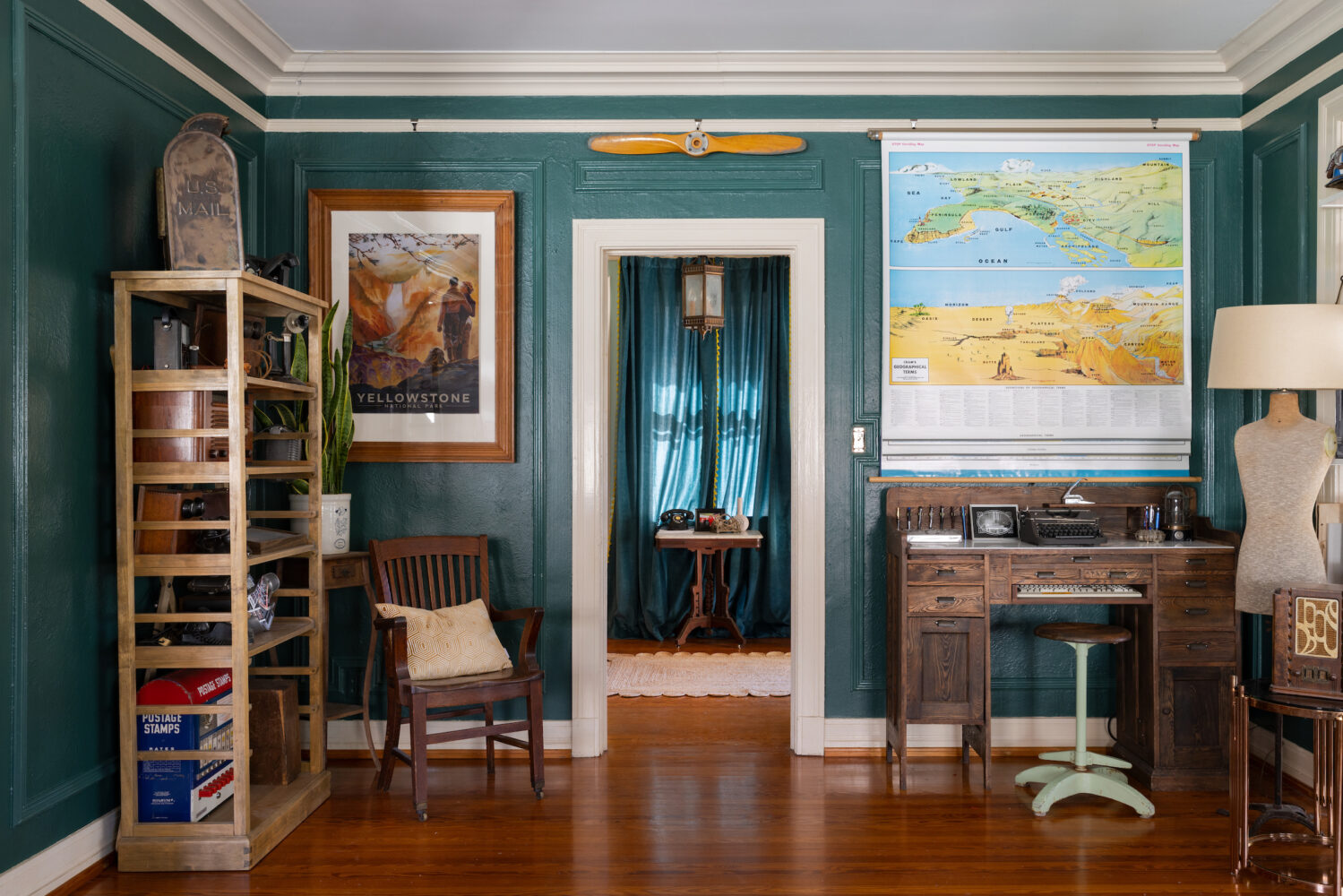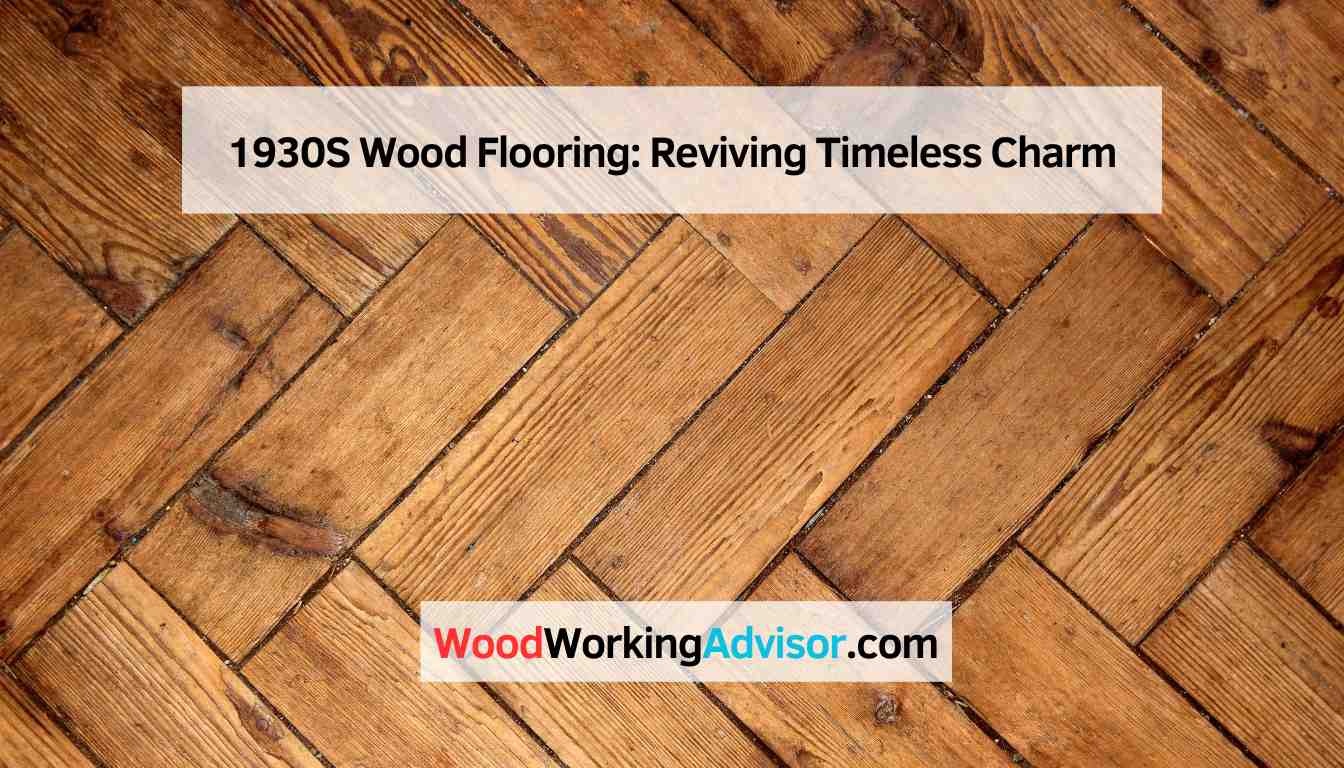1930s wood flooring typically includes wide, thick planks made from various hardwood materials found locally. Early colonial America mainly used materials from nearby forests like oak, hickory, and bamboo for flooring.
These sturdy planks were often cut from the surrounding environment, giving a unique and rustic appearance to old houses. In addition to their durable nature, these hardwood floors from the 1930s era provide historical charm and a seamless match to the original flooring.
For homeowners looking to renovate or preserve the authenticity of their historic property, understanding the origins and materials of 1930s wood flooring can offer valuable insights into maintaining the timeless appeal of these age-old surfaces. Whether opting for professional restoration or a DIY approach, the rich history and craftsmanship of 1930s wood flooring add character and warmth to any living space.
Reviving 1930s Wood Flooring
Step back in time by reviving the classic beauty of 1930s wood flooring. With its timeless charm and enduring appeal, bringing back this vintage flooring style adds character and warmth to any space.
Timeless Charm Of 1930s Wood Flooring
- Elegant and traditional, 1930s wood flooring exudes a classic allure.
- Rich patina and intricate grain patterns create a unique visual aesthetic.
- Durable and long-lasting, these floors stand the test of time with proper care.
Types Of Wood Flooring In 1930s Houses
| Wood Type | Characteristics |
|---|---|
| Oak | Common choice with high durability and a traditional look. |
| Pine | Offers a warm, rustic feel with a softer texture. |
| Maple | Known for its hardness and lighter color that brightens spaces. |
Bringing back the beauty of 1930s wood flooring not only adds a touch of nostalgia but also enhances the overall ambiance of your living space.

Credit: prcno.org
Restoring Old Wooden Floors
Wooden floors in historic buildings hold a significant charm that deserves preservation. Protecting and maintaining these floors is essential to retain their timeless beauty and historical value.
For those looking to restore old wooden floors, sanding is a crucial step in the process. With the right tools and techniques, you can bring back the natural luster of your wooden floors and enhance their durability.
Reclaimed oak flooring offers a sustainable and eco-friendly option for homeowners seeking to add a touch of history to their spaces. By using reclaimed wood, you not only contribute to the preservation of natural resources but also create a unique and character-filled environment.
Cost Of 1930s Wood Flooring
The cost of 1930s wood flooring varies based on factors such as the type of wood, condition, and size of the space. Understanding the cost implications of 1930s wood flooring can help in making informed decisions when renovating or preserving historical spaces.
Comparison Of Wood Flooring Prices
When comparing wood flooring prices, it’s essential to consider factors such as quality, source, and rarity. Antique wood flooring may have a higher price due to its historical significance and unique characteristics.
Antique Wood Flooring Costs
Antique wood flooring costs can vary significantly based on factors such as the type of wood, condition, and rarity. The prices of antique wood flooring can range from affordable options to high-end, sought-after pieces.
For instance, antique tobacco pine from Boardwalk Hardwood Floors is available for as low as $1.00 per square foot, while reclaimed oak flooring from Elmwood Reclaimed Timber is priced at $3,500.00 on Etsy. These varying costs reflect the unique nature and appeal of antique wood flooring.
Additionally, reclaimed fir engineered flooring from Arbor is listed at $20.00 per square foot, showcasing the diversity in antique wood flooring costs.
Maintaining And Identifying Wood Flooring
Preserving and caring for wood flooring is essential to maintain its natural beauty and longevity. If you have 1930s wood flooring in your home, it’s important to follow specific preservation tips and know how to identify and care for these unique floors.
Preservation Tips For Old Wood Floors
Preserving old wood floors requires special attention and care to ensure their continued beauty and stability. Here are some important tips to follow:
- Regular Cleaning: Use a soft broom or vacuum cleaner with a brush attachment to remove dirt, dust, and debris from the surface of the floor. Avoid using harsh cleaning agents or excess water, as these can damage the wood.
- Gentle Mopping: Use a damp mop or microfiber cloth lightly soaked in a mild wood floor cleaner to remove stains and spills. Avoid excessive moisture, as it can cause warping or cupping of the wood.
- Avoid High Heels: Discourage walking on the wood floors with high heels or shoes with sharp, pointed heels, as they can cause deep scratches and dents.
- Protect from Furniture: Use felt pads or furniture coasters under the legs of furniture to prevent scratches and scuffs. Lift heavy furniture instead of dragging it across the floor.
- Control Humidity: Maintain a stable indoor humidity level between 40% and 60% to prevent the wood from expanding or contracting excessively. Use a humidifier during dry seasons and a dehumidifier during humid seasons.
- Refinish when Needed: If the finish on your wood floors is worn or damaged, consider refinishing them to restore their original shine and protect the wood. Consult a professional for best results.
Identifying And Caring For 1930s Wood Floors
1930s wood floors have a distinct charm and character that sets them apart from modern flooring options. Here are some key tips for identifying and caring for these unique floors:
- Material: 1930s wood floors were typically made from solid hardwood, such as oak, maple, or pine. The planks may be wider and thicker compared to modern flooring options.
- Pattern: 1930s wood floors often feature intricate patterns, such as herringbone or parquet. These patterns were popular during that era and can add a touch of elegance to your space.
- Condition: Inspect the condition of the wood floor for any signs of damage, such as cracks, gaps, or water stains. Address these issues immediately to prevent further deterioration.
- Periodic Maintenance: In addition to regular cleaning, 1930s wood floors may require periodic maintenance, such as resealing or waxing, to keep them looking their best. Consult a professional for guidance.
- Preserving the Original Look: If you want to maintain the original look of your 1930s wood floors, opt for a finish that enhances the natural color and grain of the wood, rather than drastically altering it.
- Professional Help: Consider seeking professional assistance for the maintenance and restoration of 1930s wood floors. They have the expertise and resources to handle these delicate floors with care.
By following these preservation tips and taking proper care of your 1930s wood floors, you can ensure they remain beautiful and durable for years to come. Remember to consult professionals for any major repairs or refinishing projects to ensure the best results.
Expert Advice And Design Choices
When it comes to wood flooring choices, it’s essential to get expert advice and make design choices that perfectly suit your needs and preferences. Hiring professionals vs. DIY, as well as listening to interior designers’ insights, can greatly influence the outcome of your wood flooring project.
Hiring Professionals Vs. Diy
Choosing between hiring professionals or taking the DIY route for your wood flooring project can be a tough decision. While DIY may seem cost-effective, it requires a significant amount of skill, time, and effort. On the other hand, professionals have the expertise and experience to ensure a flawless installation or restoration process. Additionally, professionals can offer advice on material selection, design options, and maintenance tips that can help extend the lifespan of your wood flooring.
If you decide to take the DIY route, it’s crucial to do thorough research and gather the necessary tools and materials before starting. However, keep in mind that mistakes in installation or refinishing can be costly and time-consuming to fix. Therefore, it’s recommended to assess your skills and consider consulting with professionals before embarking on a DIY wood flooring project.
Interior Designers’ Insights On Wood Flooring
Interior designers play a vital role in helping you make design choices that harmonize with your overall aesthetic. When it comes to wood flooring, their insights can be invaluable. Here are a few key factors that interior designers consider:
- The overall style and theme of the space: Wood flooring comes in various styles, such as traditional, modern, rustic, or vintage. Interior designers can guide you in choosing the right style that complements your existing decor or desired design theme.
- The color palette: Wood flooring is available in a wide range of colors, from light blondes to deep mahoganies. Interior designers can help you select a color that enhances the visual appeal of your space and complements other design elements.
- The durability and maintenance requirements: Different wood species have different durability levels and maintenance requirements. Interior designers can help you choose a wood species that suits your lifestyle, ensuring your wood flooring remains in excellent condition for years to come.
By seeking the advice of interior designers, you can make informed design choices that lead to a stunning wood flooring installation or restoration project. Their expertise can help you create a space that is not only aesthetically pleasing but also functional and durable.

Credit: www.compass.com
Frequently Asked Questions For 1930s Wood Flooring
What Flooring Was Used In 1930s Houses?
In the 1930s, houses often used hardwood flooring made of wide, thick planks from nearby forests. Unlike today’s variety of options, they used whatever material was available, such as oak, hickory, or other local woods.
What Type Of Wood Floors Are In Old Houses?
Old houses typically have hardwood floors, often made from wide, thick planks sourced from local forests.
Do Old Wood Floors Have Asbestos?
Old wood floors in old houses may contain asbestos due to past construction practices.
What Were Old Hardwood Floors Made Of?
Old hardwood floors were typically made of wide, thick planks cut from nearby forests, such as oak or pine. This type of flooring reflected the available materials, unlike today’s varied options such as bamboo and hickory.
Conclusion
1930s wood flooring brings a touch of history and character to any space. With its durability and timeless appeal, it’s a popular choice for restoration projects and modern homes alike. Whether you opt for reclaimed or engineered wood, the warmth and charm of vintage wood flooring is sure to enhance any interior.


